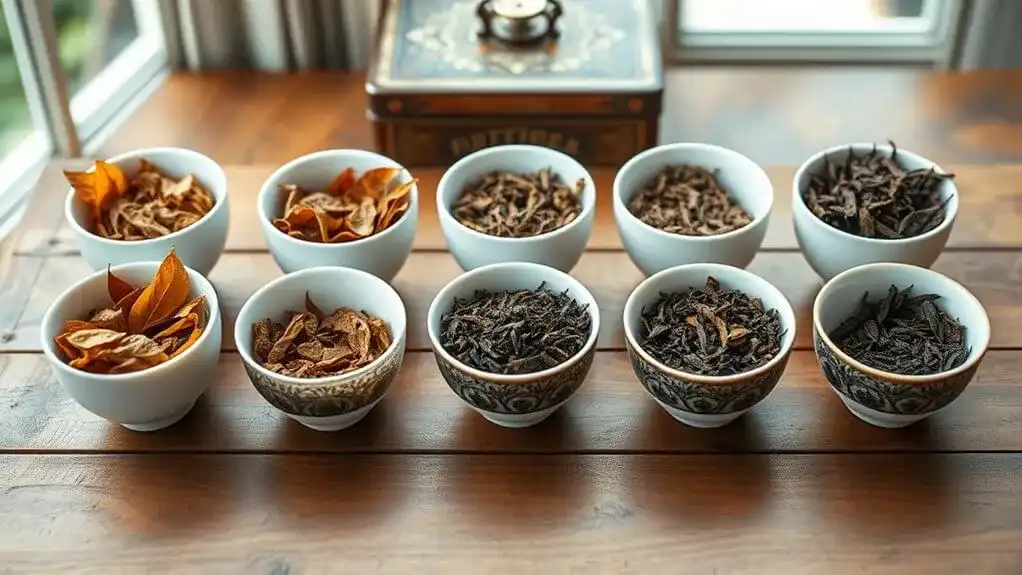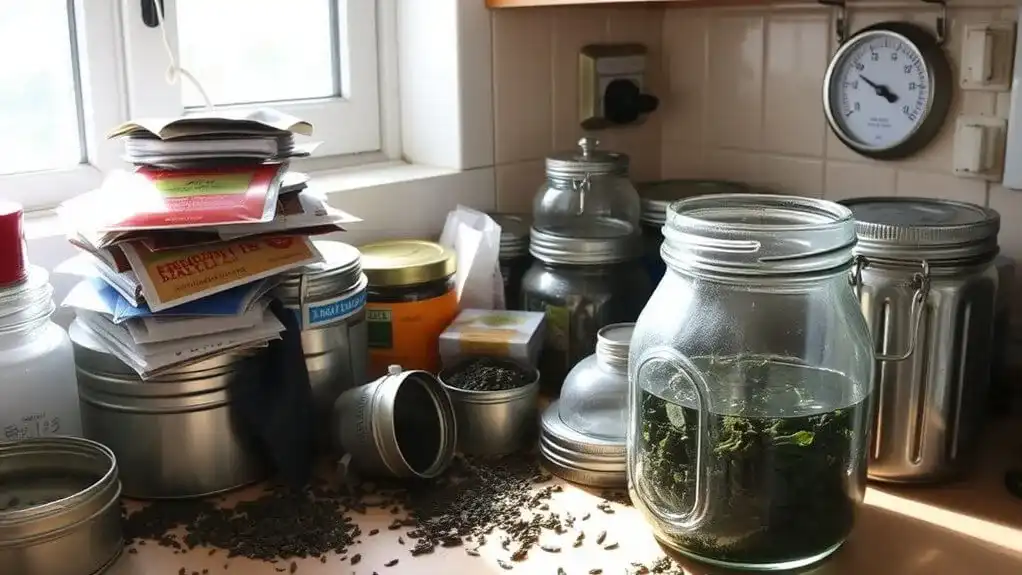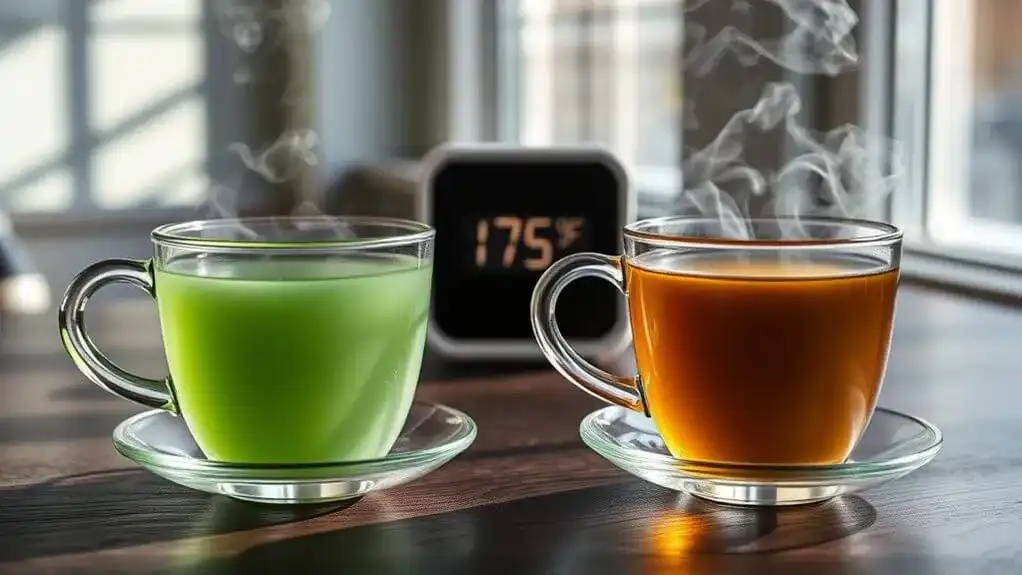Tea grade terminology provides a standardized way to classify tea leaves based on their size, quality, and appearance. The Orange Pekoe grading system serves as the primary method for black tea classification, with grades ranging from whole leaf (OP) to broken leaves (BOP) and smaller particles like fannings. Higher grades typically indicate better quality, with golden tips signifying premium teas. Understanding these grades helps tea enthusiasts make informed choices, with each category offering unique brewing characteristics and flavor profiles.
Key Points
- Orange Pekoe grades classify black tea based on leaf size, position, and quality, with higher grades indicating superior leaves from the plant.
- Tea grades with "Broken" (like BOP) indicate partially broken leaves that brew faster and provide stronger flavors than whole leaves.
- Golden Tips in grades (GFOP, TGFOP) signify premium quality, showing presence of young buds that turned golden during oxidation.
- Fannings and Dust are smaller particles commonly used in tea bags, offering quick brewing but less complex flavors.
- Letter combinations in grades (FOP, GFOP, TGFOP) indicate quality levels, with additional letters generally meaning higher quality tea.
What Are Tea Grades and Why Do They Matter?
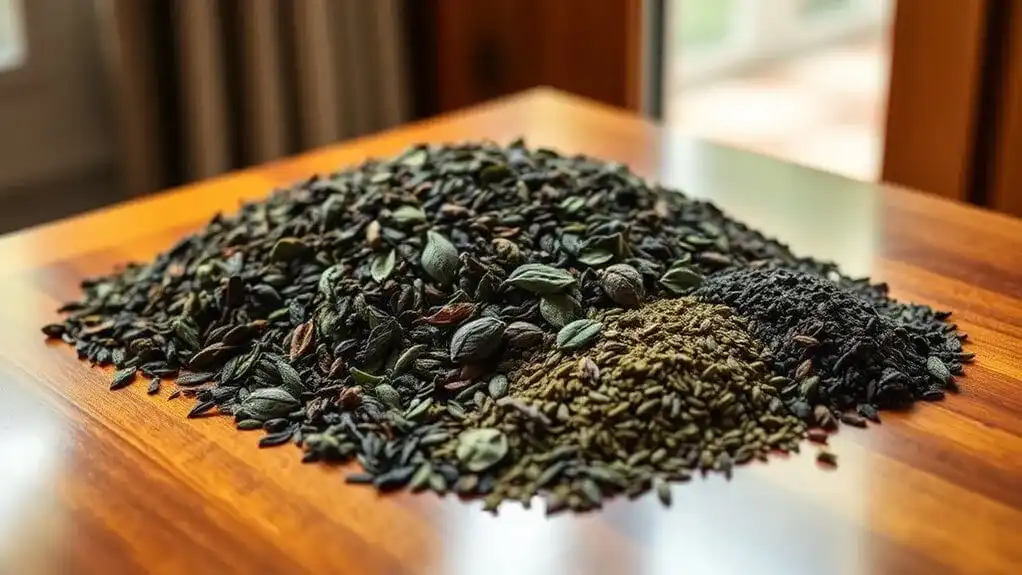
While many tea drinkers simply enjoy their daily cup without much thought, tea grades play an essential role in determining the quality, taste, and value of every tea product on the market. These tea classifications serve as a standardized system to assess and categorize tea leaves based on their size, appearance, and overall quality. Tea grades impact the strength and brewing speed of your cup. Different countries utilize unique grading systems to maintain their own quality standards.
The grading importance extends beyond just manufacturing standards. It provides consumers with valuable information to make informed purchasing decisions and helps them understand what to expect from their tea experience. Whether it's whole leaf, broken leaf, fannings, or dust, each grade influences the tea's brewing potential and flavor profile. For manufacturers, this system guarantees consistency across batches, while buyers can confidently select products that match their preferences and brewing needs. The highest quality teas are carefully harvested and contain only leaf buds and shoots, which require special handling to prevent damage.
The Orange Pekoe Grading System: Fundamentals
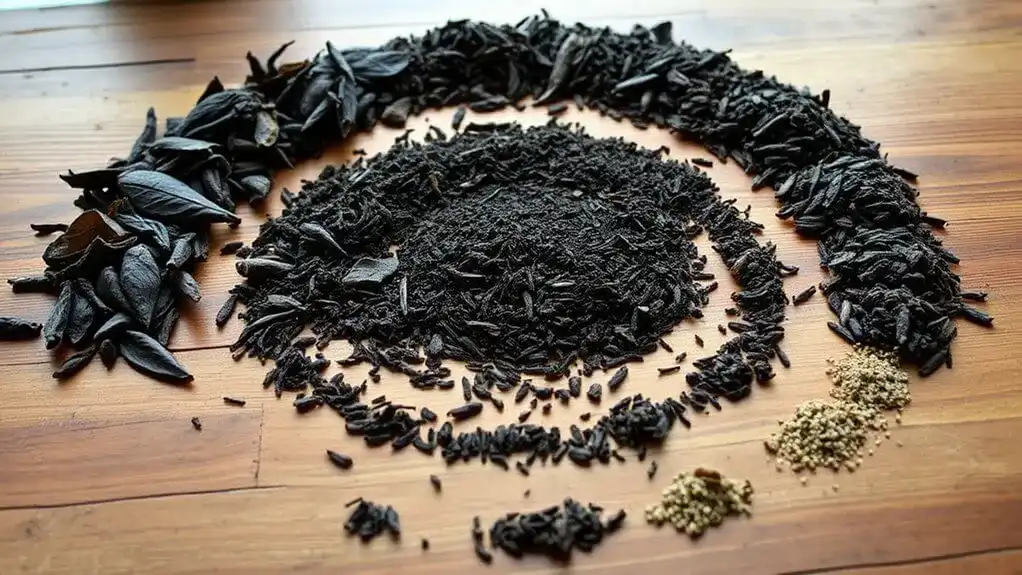
The Orange Pekoe grading system stands as the backbone of black tea classification worldwide. Its leaf classification methods focus primarily on size, position, and quality of tea leaves harvested from the Camellia Sinensis plant. Different regions follow unique grading approaches, with little standardization between them. The higher the leaves grow on the shrub, the better their grade typically becomes. Visual appearance often takes precedence over other quality factors, as leaf appearance determines market value.
The grading criteria essentials incorporate multiple factors, from leaf size to tip presence. While traditionally picked by hand, the industrialization of tea production led to mechanical methods that impacted grading standards. Whole leaves receive higher grades than broken ones, with terms like "Flowery," "Tippy," and "Golden" indicating the presence of buds and golden tips. The system uses a vertical sieve process to sort leaves into categories, from premium whole leaves to smaller particles. While SFTGFOP represents the highest grade, lower grades like fannings and dust are typically reserved for commercial tea bags.
Breaking Down Broken Tea Grades
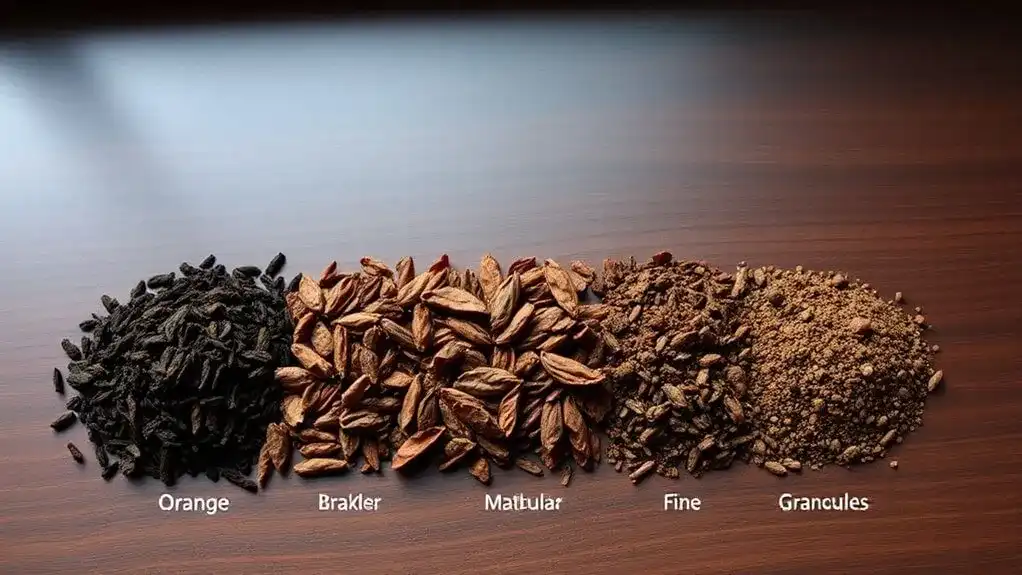
Broken tea grades represent a complex classification system used to categorize partially broken tea leaves based on their size, quality, and tip content. The broken leaf classification includes various grades, with quality indicators ranging from basic BP (Broken Pekoe) to premium TGBOP (Tippy Golden Flowery Broken Orange Pekoe).
Key characteristics of broken tea grades include:
- FBOP contains coarser leaves with some tips
- GFBOP features golden leaves with a high proportion of tips
- TGBOP represents the highest quality with abundant tippy leaves
- BP consists of small, fragmented black tea leaves
These grades brew faster than whole leaf varieties due to their smaller size. The Fannings and Fines are commonly used in commercial tea blends for quick brewing results. While commonly used in tea bags, some broken grades, particularly those with golden or tippy leaves, still offer exceptional flavor profiles and are highly valued in the tea industry. BOP1 represents the highest quality broken orange pekoe grade in the classification system.
Golden Tips and Their Role in Tea Grading
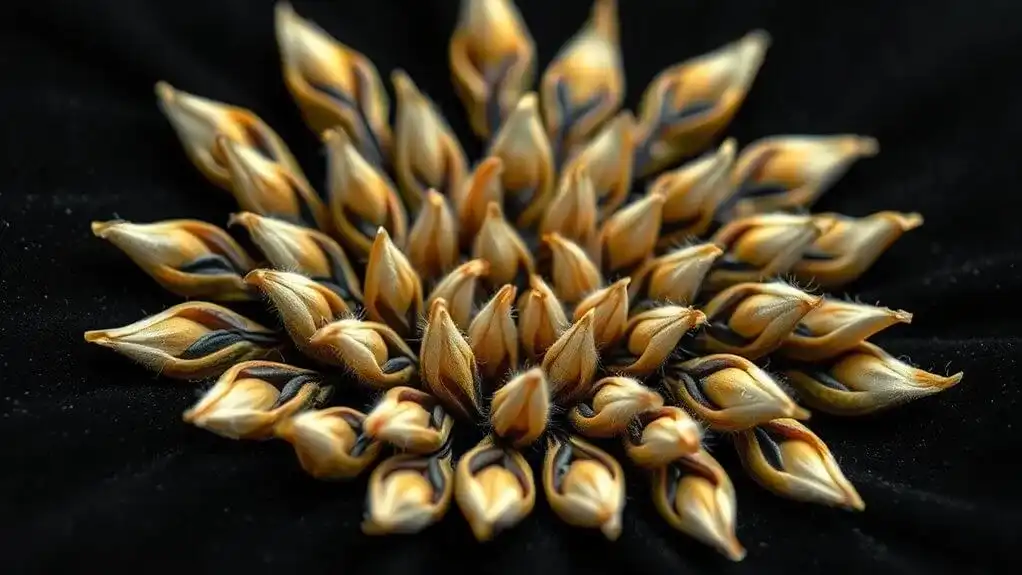
Golden tips, prized as nature's hallmark of premium tea, serve as a critical indicator in the complex world of tea grading. These tips emerge when young tea buds turn golden during oxidation, signaling exceptional tea quality and careful harvesting methods.
The grading system reflects the abundance of golden tips through specific designations. GFOP represents the entry level, while TGFOP and FTGFOP indicate progressively higher concentrations. The prestigious SFTGFOP grade showcases the highest proportion of golden tips, particularly common in Darjeeling teas. Broken Orange Pekoe grades like GBOP also incorporate golden tips to enhance flavor characteristics. While grading systems vary between regions, adding a number one to any grade designation indicates the absolute finest quality within that classification.
Teas rich in golden tips typically deliver a more delicate flavor profile and command higher market values. This characteristic is especially valued in Indian and Nepalese teas, where the grading system emphasizes the presence of these prized golden buds through distinct classifications like TGFOP and SFTGFOP.
Fannings and Dust: Understanding Lower Grades

While premium teas showcase golden tips and whole leaves, fannings and dust represent significant lower grades in tea classification. These grades play a vital role in commercial tea production, with distinct characteristics and uses. CTC tea variants produce small pellet-shaped leaves that are commonly used in commercial tea production. Essential oils in these grades oxidize rapidly, diminishing the overall flavor quality.
Fannings advantages include:
- Quick brewing time for convenient tea bag use
- Strong, robust flavor profile
- Cost-effective for mass production
- Suitable for commercial blending
Despite their commercial importance, dust teas come with notable drawbacks. They're the finest particles in tea processing and can become overly astringent when steeped too long. While both grades brew quickly, dust's powdery texture can lead to bitter results. Fannings maintain a coarser texture than dust, making them slightly more manageable in tea bags. Both grades serve specific purposes in the tea industry, particularly in mass-market products where quick brewing is vital.
Regional Variations in Tea Grading Systems
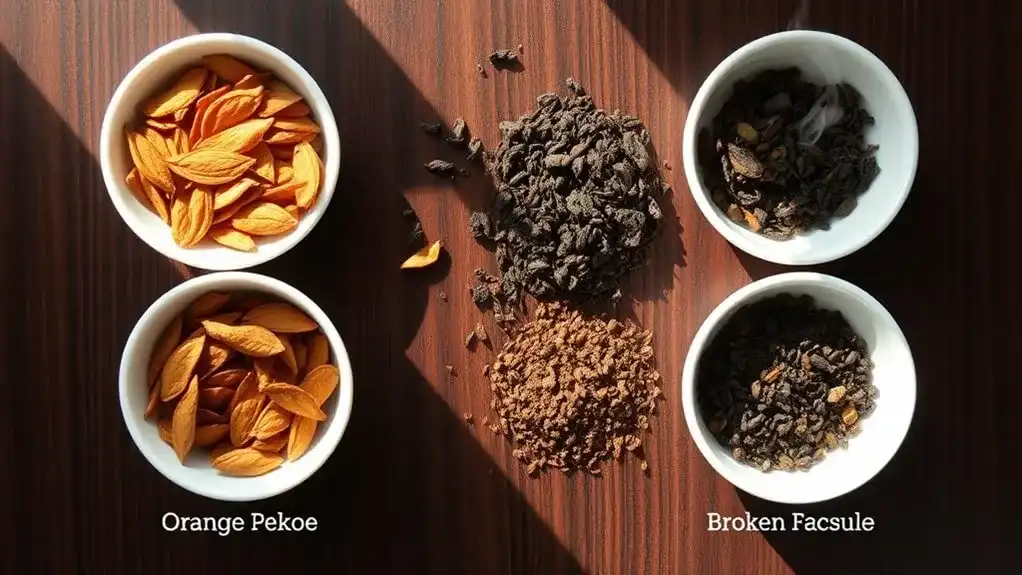
Beyond the basic distinctions of fannings and dust grades, tea classification becomes more complex when examining global standards. Regional grading systems vary greatly, with the British favoring the Orange Pekoe system while Chinese producers often use numerical grades. These differences reflect deep-rooted cultural influences in tea production and trading practices.
Tea terminology presents unique grading challenges across markets. While the British system focuses on leaf size and appearance, Chinese graders emphasize different quality markers. Whole leaf teas provide the most complex flavor profiles and command premium prices in the market. The Japanese grading system relies heavily on growing regions and specific cultivation methods. This lack of uniformity can affect market transparency and make quality assurance more difficult for international buyers. Some regions, like Darjeeling and Assam, have developed their own specific grading nuances within the broader Orange Pekoe framework, adding another layer of complexity to the global tea trade.
How Tea Grades Impact Flavor and Quality
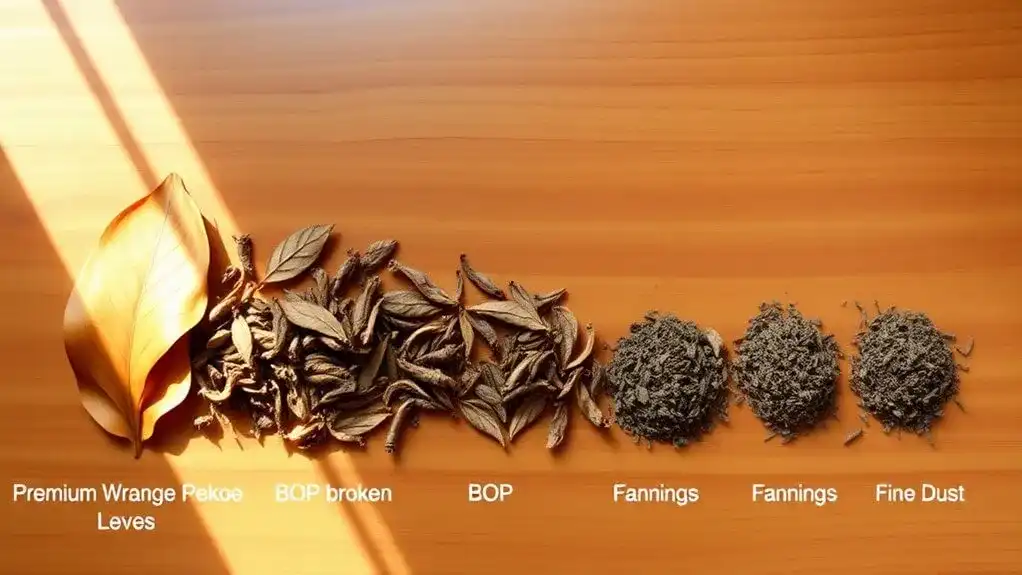
Understanding how tea grades affect flavor begins with leaf size and processing quality. The grade of tea serves as one of the key quality indicators, directly influencing both taste and brewing characteristics. Higher grades, particularly whole leaf teas, deliver complex flavor nuances that develop gradually during steeping. Professional tea graders carefully examine each batch to ensure proper leaf assessment. The highest grade available is the FTGFOP grade, which represents the finest tippy golden flowery orange pekoe teas.
- Whole leaf teas offer layered complexity with less astringency and a smoother finish
- Broken leaf teas release bold flavors quickly, perfect for stronger cups
- Fannings and dust brew rapidly but lack the depth of whole leaves
- First Flush teas provide more delicate profiles than Second Flush varieties
Tea's grade impacts everything from brewing speed to taste development. While whole leaves take longer to steep, they reward patience with richer flavors. Broken leaves and fannings, though brewing faster, typically produce stronger, more bitter cups with less complexity.
Choosing the Right Tea Grade for Your Needs

Selecting the right tea grade depends heavily on your brewing preferences and desired flavor profile. For those seeking nuanced, delicate flavors, whole leaf grades like OP (Orange Pekoe) and TGFOPS offer superior taste experiences with their intact leaves and golden tips. These higher grades showcase the tea's natural complexity and special aroma. Growing region characteristics contribute significantly to the overall quality and flavor development of premium grades.
Consumers who prefer stronger, bolder flavors might find BOP (Broken Orange Pekoe) grades more suitable, as smaller leaf particles release flavor more quickly during brewing. Tea preferences also factor into convenience considerations – tea bags containing fannings work well for quick brewing, while whole leaf grades require more time and careful preparation. Understanding these distinctions helps tea drinkers match their flavor profiles and brewing habits with the appropriate grade, ensuring a satisfying tea experience.
Reading Tea Labels: A Practical Guide to Grades
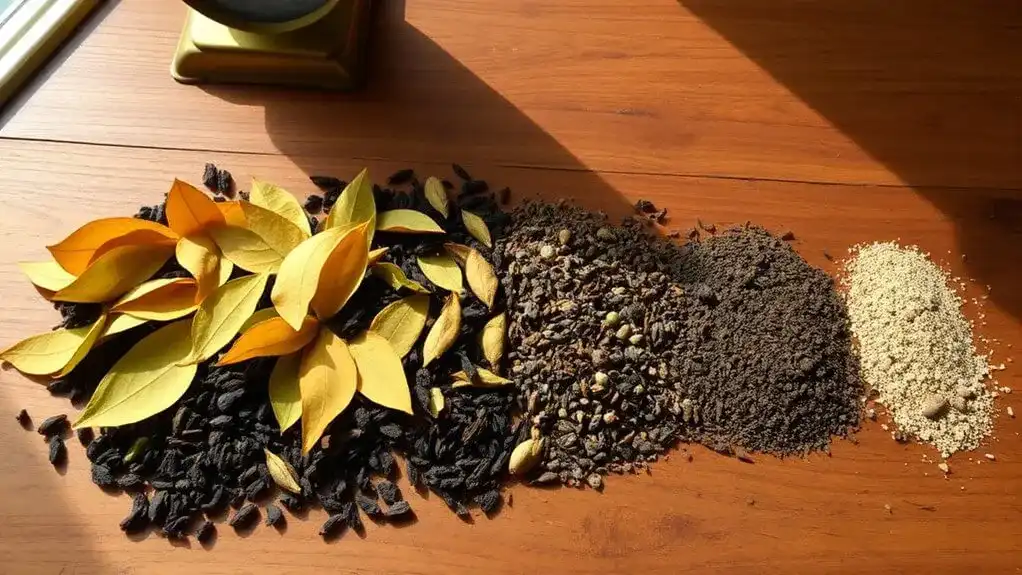
When reading tea labels, consumers often encounter a complex array of letters and numbers that represent specific grades and qualities. Tea label reading becomes easier once you understand that these codes indicate leaf size, quality, and processing methods. For effective grade identification, look for these common indicators:
- FOP (Flowery Orange Pekoe) signals high-quality whole leaf tea from the first two leaves and bud
- GFOP (Golden Flowery Orange Pekoe) indicates whole leaf tea with golden tips
- TGFOP (Tippy Golden Flowery Orange Pekoe) means FOP with extra tips
- BOP (Broken Orange Pekoe) represents small, flat broken leaves
These grades primarily apply to black teas from India, Nepal, and Sri Lanka. The whole leaf teas generally provide more complex and aromatic flavors in the cup. Remember that whole leaves need longer brewing times, while smaller grades like fannings and dust steep quickly, making them ideal for tea bags. White, green, and oolong teas typically do not follow this grading system.
Conclusion
Tea terminology truly transforms the taster's experience from perplexing to purposeful. Whether selecting sublime silver tips or practical pekoe, proper grade knowledge promises a perfect cup every time. From factory floor to family table, understanding these distinctions delivers deeper appreciation and smarter shopping. Today's tea drinkers don't have to feel frustrated by fancy phraseology – they're now equipped to pick precisely the grade that'll please their palate.
